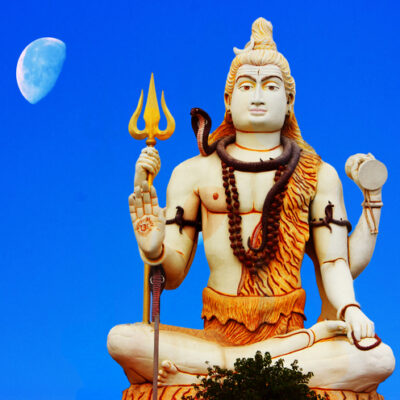Leaning Temple of Huma (Bimaleswar Temple), Odisha

Address
Leaning Temple of Huma (Bimaleswar Temple), Odisha
Sambalpur, Hirakhand
Tabada,
Odisha 768113
Moolavar
Bimaleswar
Introduction
- Location: The Leaning Temple of Huma is situated in the village of Huma, located on the banks of the Mahanadi River, about 23 km south of Sambalpur in Odisha, India.
- Deity: The temple is dedicated to Lord Bimaleshwar, a form of Lord Shiva.
- Unique Feature: It is one of the few leaning temples in the world. Despite the leaning structure, the temple’s pinnacle remains perpendicular to the ground, making it an architectural and natural marvel.
- Mystery: It is unclear whether the temple leans by design or due to other factors.
Puranic Significance:
- Origins of Worship: The worship of Lord Shiva at this site began with a milkman who crossed the Mahanadi River daily. He would offer a portion of milk to a rock on the riverbank, which would mysteriously consume the milk. This miraculous event led to the establishment of the temple at the spot.
- Surrounding Temples:
- Bhairavi Devi Temple is situated to the left of the main temple.
- Bhairo Temple is located to the right of the main temple.
- Historical Construction:
- Emperor Anangabhima Deva-III, from the Ganga Vamsi dynasty, is believed to have initially built the temple.
- The temple underwent reconstruction or renovation during the rule of King Baliar Singh (1660–1690 A.D.), the fifth Chauhan king of Sambalpur.
- Further developments were made under the rule of King Ajit Singh (1766–1788 A.D.) of Sambalpur.
Architectural Mystery:
- Location: The temple is positioned on a rocky outcrop along the banks of the Mahanadi River.
- Leaning Phenomenon:
- The reason behind the leaning of the temple is not believed to be caused by construction flaws or a weak foundation.
- Instead, it is suspected that natural factors, such as flood currents in the Mahanadi or earthquakes, may have caused displacement of the rocky base beneath the temple, leading to its tilt.
- Tilt Details:
- The main temple is tilted at an angle of 13.8 degrees in one direction, while the smaller temples around it tilt in different directions.
- The entire temple complex, including the boundary walls, is tilted, but the tilt has remained relatively stable for the past 40-50 years.
- Geological factors, such as an uneven rock structure beneath the temple, may be responsible for the unique tilt.
Significance of the Tilt:
- The tilt has become an intriguing subject for historians, sculptors, and researchers.
- Despite the tilt, the temple has remained stable, adding to the mystery of the structure. The locals and priests believe the angle of the inclination has not changed over several decades, suggesting that it may be a long-standing feature of the temple rather than a result of recent shifts.



Festivals
An annual fair takes place at the foothill of the temple in March every year on Shivratri.
Century/Period
1766–1788 A.D.
Managed By
Department of Archaeology (DOA)
Nearest Bus Station
Sonpur-Sambalpur Road & reach Huma Village
Nearest Railway Station
Maneswar Station
Nearest Airport
Raipur






